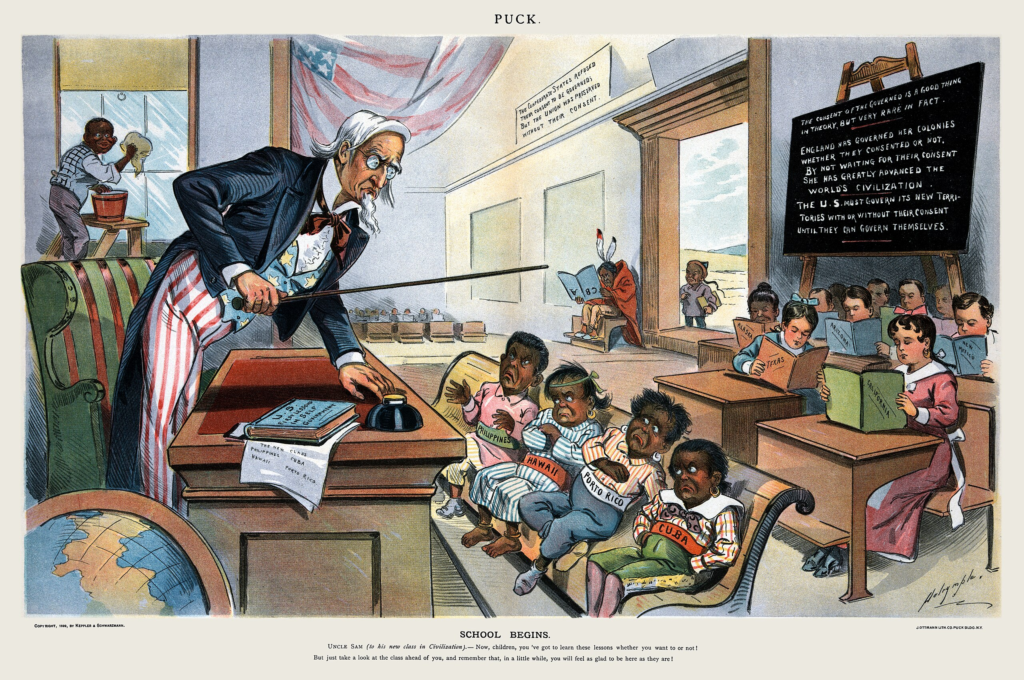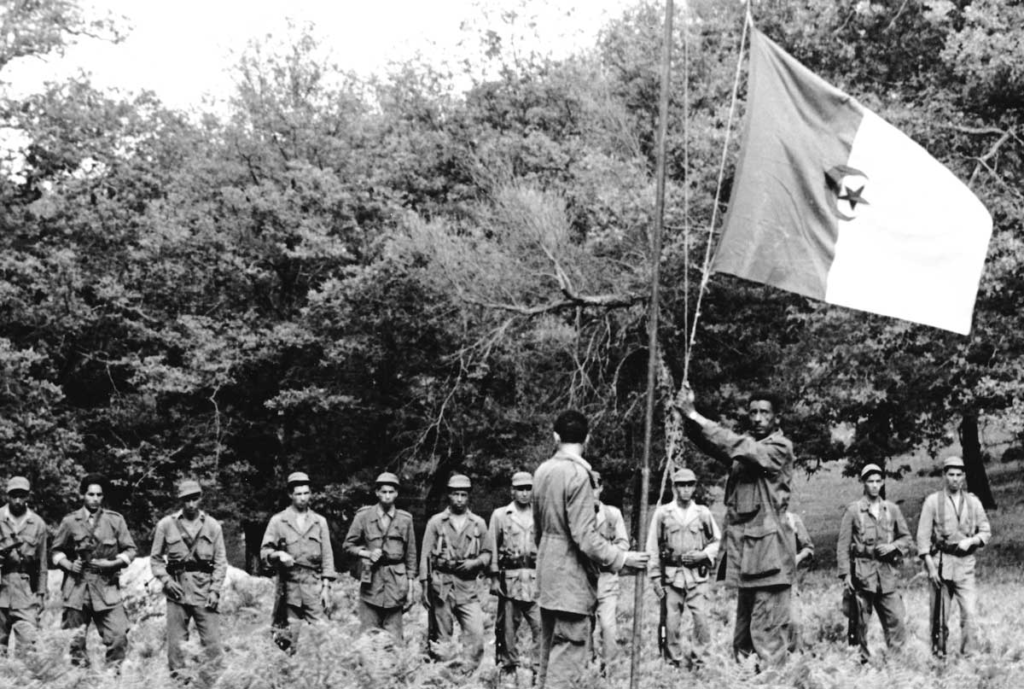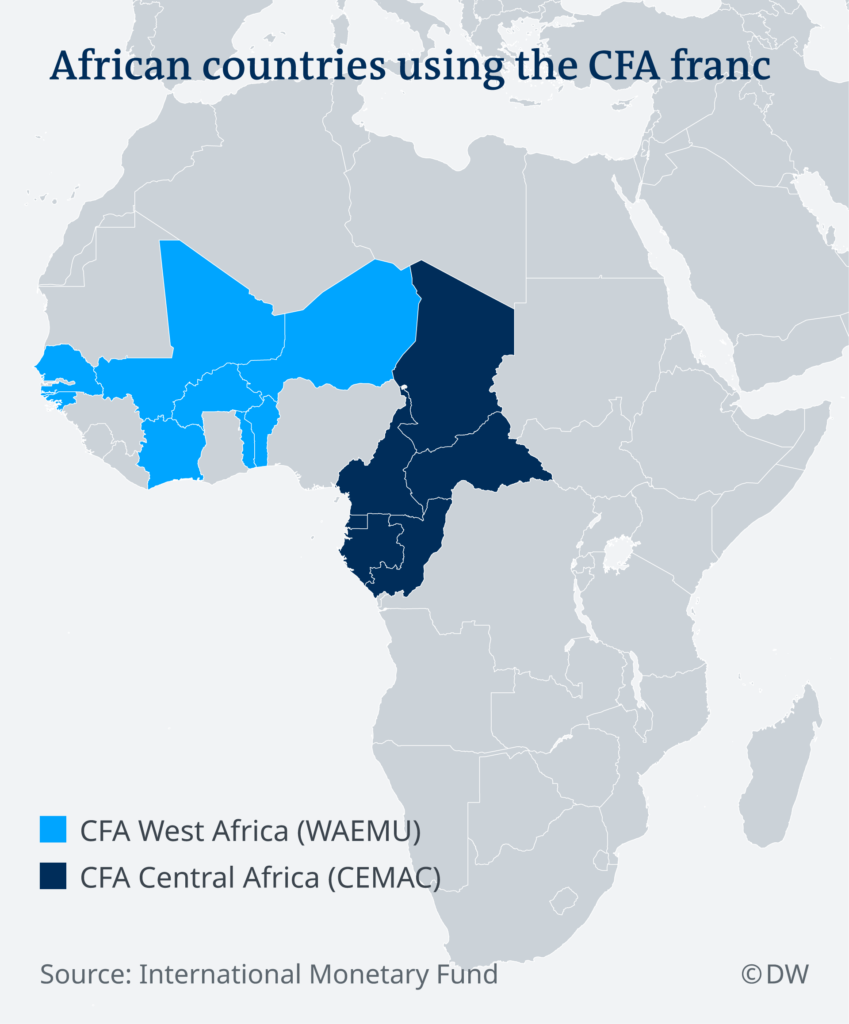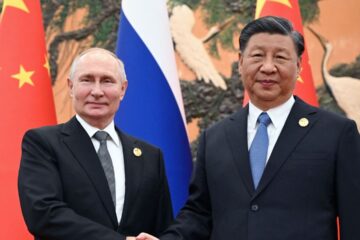IMPERIAL HIERARCHIES between the 1880s and the 1990s
What you want to understand: 🤔
- How were racial hierarchies justified and implemented by colonial empires?
- Why was there also a hierarchy amongst and between colonised populations?
- How did colonial conquests lead to the emergence and fall of empires?
- How, despite decolonisation, did imperial hierarchies persist?
According to Burbank and Cooper, empires are “large political units that maintain distinction and hierarchy as they incorporate new populations”. Indeed, in their imperial ambitions to control foreign lands, resources and populations, empires base their power and mode of governance on hierarchies both vis-à-vis local populations and within these populations. We also found hierarchy between empires engaged in an imperial competition to extend their zone of influence. They seek to gain imperial power by increasing their dominance and authority over foreign territories and populations. The Berlin Conference (1884-1885) launched a phase of imperial conquest named the and the ensuing the Scramble for Africa that lasted until around World War I (WW1). The administration phase of the newly acquired territories is more or less equivalent to the inter-war period. Since the post-WW2 period until the collapse of the USSR in 1991, colonial empires progressively disappeared during a global wave of decolonisation that unfolded in the context of the Cold War.
We can wonder: to what extent did hierarchies constitute the basis of imperial power?
First of all, we will study the conquest phase during which empires created imperial hierarchies to base their power. Then we will see that imperial administration reinforced these hierarchies. Finally, we will analyse the fall of empires and their efforts to maintain imperial hierarchies anyway.
I. Creating imperial hierarchies in the conquest phase (1880s-WW1)
Empires’ expansionist ambitions created hierarchies between them and were justified by the objective to civilise inferior races.
A. Imperial rivalries
Empires’ ambitions to extend their zone of influence were sometimes conflictual with one another and a hierarchy ensued between them. For instance, some empires disappeared like the Spanish Empire in 1898 after its defeat against the US that took over Spanish overseas territories such as the Philippines and Puerto Rico. Started in 1868, the Meiji Restoration enabled Japan to disrupt the hierarchy of empires dominated by Europeans. The re-organisation of the state and the modernisation of the economy provided Japan with the means to carry out its imperial projects in East Asia. For instance, in 1904-1905, it fought and defeated the Russian Empire that was lusting after Korea and Manchuria. Germany also attempted to challenge the hierarchy of power between empires by opposing French ambitions to take over Morocco during the Tangier Crisis (1905) and the Agadir Crisis (1911). In fact, the Kaiser Wilhelm II defended Germany’s “Place in the Sun” i.e. the leading role it deserved to play on the international stage.
These imperial tensions escalated until WW1 broke out in 1914. Empires divided up in two groups: the Triple Entente (France, Great Britain and Russia), Japan and the US against the Triple Alliance (Germany, Austro-Hungary and Italy) and the Ottoman Empire. Post-war treaties sought to establish a global order with winners seizing losers’ imperial territories. For example, the Treaty of Versailles (1919) forced Germany to transfer Rwanda-Urundi to Belgium and its territories in the North of the Pacific Ocean to Japan. Likewise the the Sykes-Picot Agreement (1916) and the Treaty of Sèvres (1920) dismembered the Ottoman Empire. The League of Nations allocated mandates over Syria and Lebanon to France and over Palestine to Great Britain (GB).

Therefore, imperial wars reshaped the hierarchy of power between empires: some disappeared like the Ottoman Empire and Spain, some strengthened their position like France and GB, and others emerged like Japan and the US.
B. Civilising mission
Imperial conquests were justified by a civilising mission with regards to races deemed inferior. This narrative took a paternalistic dimension in Europe and in the US, and a fraternal dimension in Japan. It was based on the moral obligation to spread their institutions and values to the rest of the world. As shown in Louis Dalrymple’s cartoon “School begins” (1899), education of local populations was a means to showcase the coloniser/colonised hierarchy and the American involvement for the greater good as President William McKinley explained to his Peace Commissioners for the Treaty of Paris’s negotiations in 1898.

To assert the superiority of the white race and thus justify their imperial conquests, empires resorted to sciences like anthropology and craniology that were notably practiced in the Société d’Anthropologie de Paris founded by Paul Broca in 1859.
II. Reinforcing imperial hierarchies in the administration phase (WW1-WW2)
A. Reasserting the superiority of the colonisers
Even though WW1 allowed some empires to strengthen their primacy in the imperial hierarchy, it actually challenged the colonial system based on a racial hierarchy between colonisers and colonised. In “Race, Sex and Imperial Anxieties” (2012), Richard Fogarty describes the weakening of France’s credibility in claiming its racial superiority since it needed colonial troops to defeat Germany. This shifted the perception that colonised had of their colonisers (it was captured in mails sent by African soldiers back to their colonies). Besides, during this period, colonial soldiers had intercourses with French women which reduced the prestige of the latter and thus threatened to reverse the colonial hierarchy.

Colonisers’ presence abroad could only be justified by their racial superiority and their project to uplift inferior races by spreading their culture and institutions. To reinforce the strength of this justification, empires accentuated differences during events such as the 1931 Paris Colonial Exposition that showcased the savagery of indigenous population. Visitors could see them in a human zoo where “true cannibals” were exposed in cages, even though they slept at the hotel for the night… The 1929 Korean Exposition was used by Japan to highlight the progress and modernity it brought to Korea.
Under imperial administration, hierarchies between colonisers and colonised were reinforced by discrimination in terms of living conditions and political rights. For instance, spatial segregation was striking in colonial cities like Algiers where Europeans lived in neighbourhoods with a different architecture, proper sanitation services and better electricity and water supply than the overcrowded neighbourhoods reserved for natives. Furthermore, in Misère de la Kabylie (1939), Albert Camus described the colonised’s situation in Algeria: a rampant undernutrition, an unemployment rate higher than 50% and a school attendance rate of only 20% for Algerian children. This hierarchy based on discrimination in terms of living conditions was also present in metropoles where some Africans immigrated. Indeed, according to Michael Goebel in The Capital of the Men without a Country: Migrants and Anticolonialism in Interwar Paris (2016), Chinese and Algerian auto-workers in Paris earned up to 40% less than French auto-workers. In addition, indigenous population were maintained in the status of colonial subjects and had less political rights than citizens. For instance, in 1917, Puerto Ricans were granted American citizenship but without the full protection and rights of the American Constitution.
B. Creating hierarchies within local populations
To make indigenous populations accept their domination, empires fuelled their hope of climbing up the status ladder. In fact, local elites were formed to help colonial administrations. It was a way to show that by adopting colonisers’ culture and norms, local populations could become “évoluée”. The Naturalisation Law (1912) promised to grant citizenship to deserving French subjects. Event though it was extremely rare for Africans to get a status change, they were distracted from the fact that the immense majority would remain subjects. There were inequalities between indigenous people living in imperial territories and those living in metropoles. Despite racism and spatial segregation in Paris during the inter-war period, African and Asian immigrants enjoyed freedom of artistic and political expression and had more working opportunities. Amongst the various success stories, there is that of Blaise Diagne who is a model of French cultural assimilation and who became deputy for Senegal in Paris in 1914.

Imperial hierarchies amongst colonised peoples were also established along ethnic and religious lines. For instance, the US deemed Puerto Ricans “white enough” to get American citizenship unlike Filipinos who were “unalterably Asians”. Likewise in the USSR where Stalin praised Russians for their sacrifices and involvement during WW2 while Ukrainians suffered from what some call a genocide: “Holodomor” (1932-1933) was a man-made famine that killed around 3.5 million Ukrainians so as to curtail their demands for autonomy. Nazi Germany also implemented a racial hierarchy of the peoples it had conquered: Latin peoples, like Italians, and Japanese were tolerated while Slavs and Africans had to be turned into slaves, unlike Jews who were Untermenschen (subhumans) that had to be annihilated.
III. Collapse of empires but hierarchies were maintained (1945-1990s)
The post-WW2 period is characterised by the emergence of anticolonial and pro-human rights discourses promoted by the two superpowers and international organisations like the UN. It is also a period during which empires could no longer justify imperial hierarchies with racial arguments as they fought fascism and its racist ideology.
A. Clinging on to imperial hierarchies
In the wake of WW2, countries like France or GB needed their empires in order to restore their greatness. Therefore, they tried to uphold imperial hierarchies while showing signs of improvement with regards to individual rights and liberties. For instance, the 1946 French Constitution transformed its empire into the French Union in which former colonial subjects became citizens. In fact, hierarchy was maintained because indigenous people’s political representation at the National Assembly wasn’t proportional to their demography and their votes didn’t count as much as those of settlers and citizens of French origin. Likewise, the British Nationality Act of 1948 created a status of “citizen of the UK and Colonies” but the reality didn’t match political promises. Besides, the Code de l’Indigénat (1881), which was abolished in the French Empire in 1946, was maintained in Algeria that became a département in order to better exploit it under the justification that it was not a colony but an integral part of France.

Algeria’s importance for France was embodied by the War for Independence (1954-1962) in which France strove to reassert its authority. This willingness to cling on to imperial territories was translated into an increased repression in order to uphold hierarchy between centres of power and their peripheries. For instance, in France, the Brigade des Agressions et Violences, created in 1953, was in charge of the administrative and political control of Algerians in the metropole. Besides, the Paris Préfet de Police, Maurice Papon (1958-1966), had implemented a curfew solely for Algerians and adopted anti-guerrilla practices to repress specifically Algerian demonstrations like the one that took place on October 17, 1961. After the decolonisation wave, discrimination and segregation against former colonial subjects in metropoles kept going under the form of inequalities of living conditions and economic opportunities.
B. Imperial rivalries to maintain influence and control after the decolonisation period
The wave of decolonisation that took place after WW2 until roughly 1975 was a succession of emancipation processes that happened in imperial territories. As a result, the latter gained formal independence and sovereignty as they sought to tear apart imperial hierarchies. Following the 1955 Bandung Conference, most former colonies joined the Non-Aligned Movement that refused to take side in the Cold War between the US and the USSR. In December 1958, the First Conference of the African peoples took place in Ghana. Pan-Africanism was promoted as a way to prevent former empires from undertaking neo-imperial actions to restore imperial hierarchies.

In the context of the collapse of colonial empires, the US and the USSR endeavoured to expand their respective zone of influence. The hierarchy of empires was thus reshaped as Japan and former European empires fell under the control of the US. However, this hierarchy was challenged multiple times especially by France that acquired the atomic bomb in 1960 and left NATO in 1966. Even though colonial empires had collapsed, the US and the USSR took over them and maintained imperial hierarchies with former colonies. It was the case in the Democratic Republic Congo, once under Belgian rule, with the support of President Mobutu that allocated public contracts and exploitation rights to the US.
Former colonial empires also adopted neo-imperial stances. For example, after WW2 Western African countries adopted the Franc CFA which was a currency based on the national French currency.

France also supported politically and financially local leaders like Omar Bongo in Gabon so as to further its economic and political interests in a region that it used to govern. In this context, China tried to disrupt the global power hierarchy by assuming the leadership of the Non-Aligned Movement. Indeed in his 1974 speech at the UN, Deng Xiaoping criticised the USSR’s social imperialism i.e. the imperial ambitions hidden behind the image of a socialist country. It is interesting to notice that, during the collapse of the USSR in 1991, Russia attempted to maintain its domination over the former Soviet Republics through the Commonwealth of Independent States (CIS).
Conclusion
We have now come to the conclusion that imperial power depended on the management of hierarchies vis-à-vis other empires and subordinated peoples. The conquest phase was characterised by imperial rivalries that resulted in the demise and emergence of empires. The expansion of their imperial power was supported by the moral obligation to uplift inferior races. The administration of newly acquired territories exploited inequalities between colonisers and colonised but also amongst indigenous populations in order to justify their presence and enable the exploitation of local resources. Despite the collapse of colonial empires after WW2, the latter endeavoured to create neo-imperial hierarchies with former colonies so as to retain geopolitical and economic power within the context of the Cold War’s imperial competition.



0 Comments